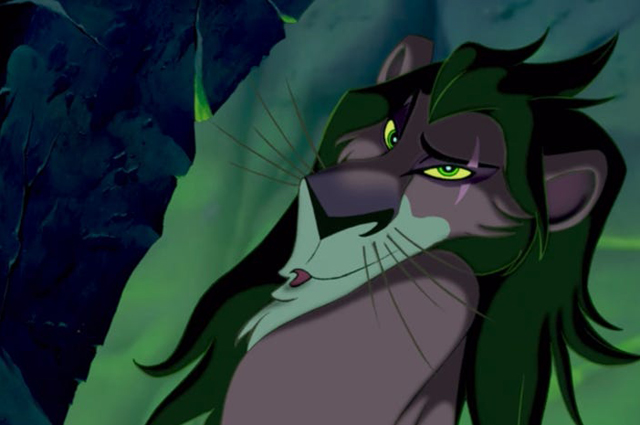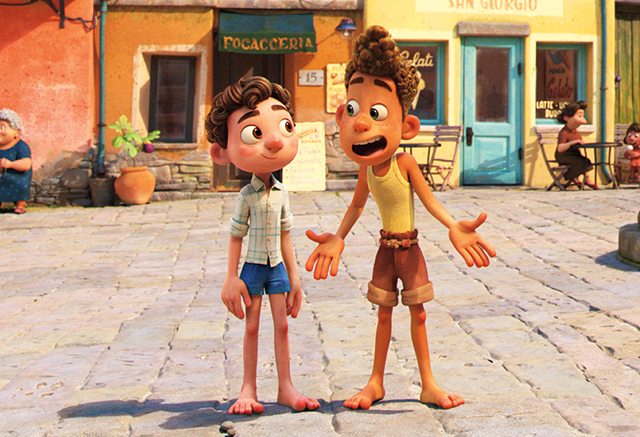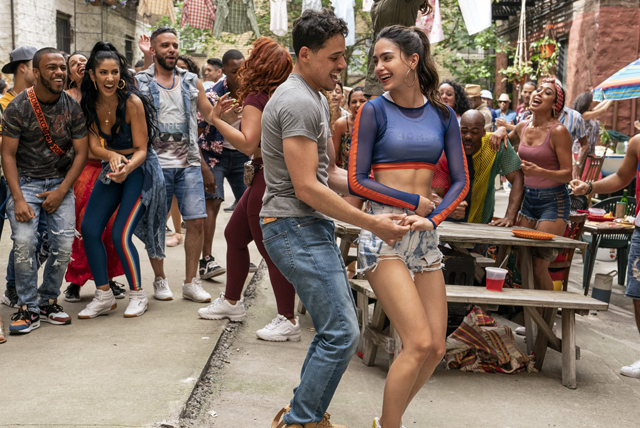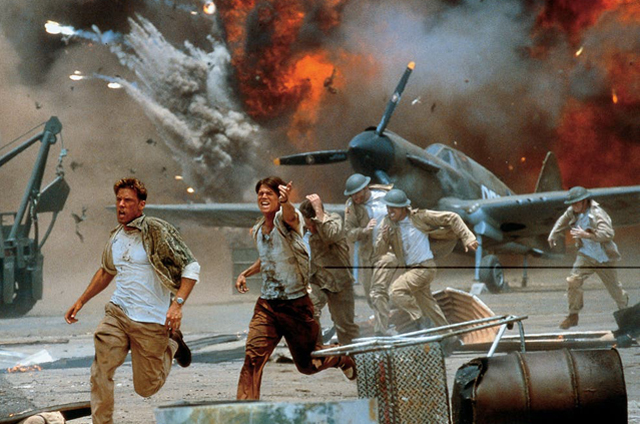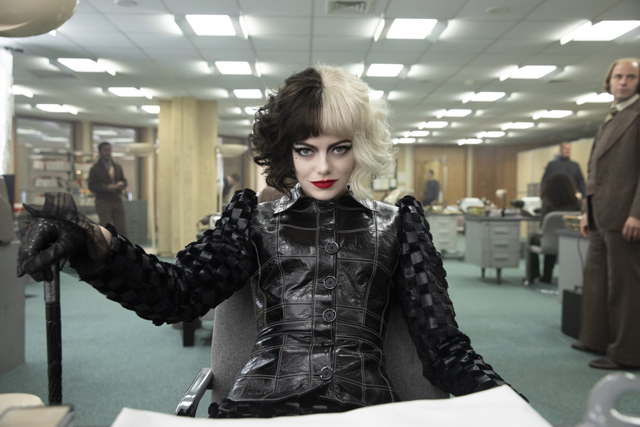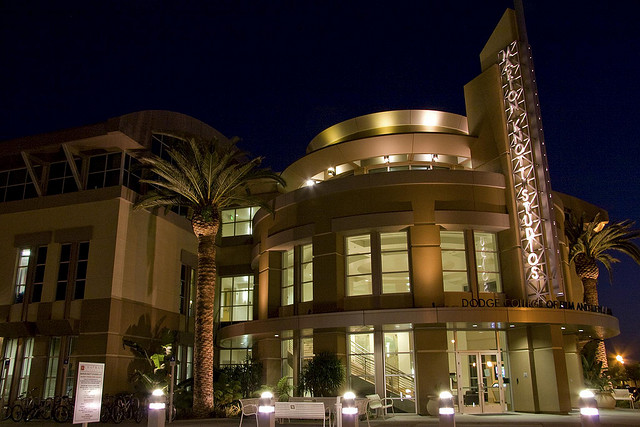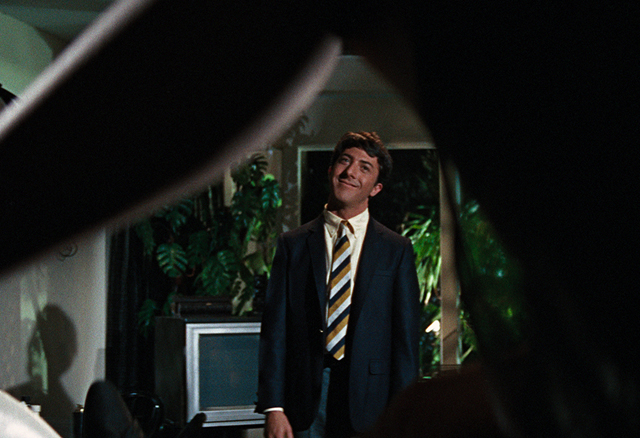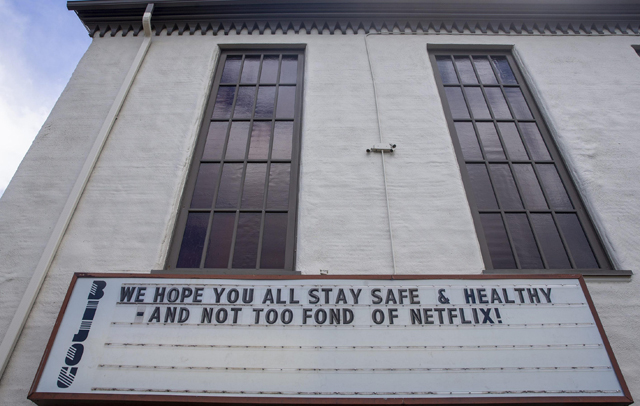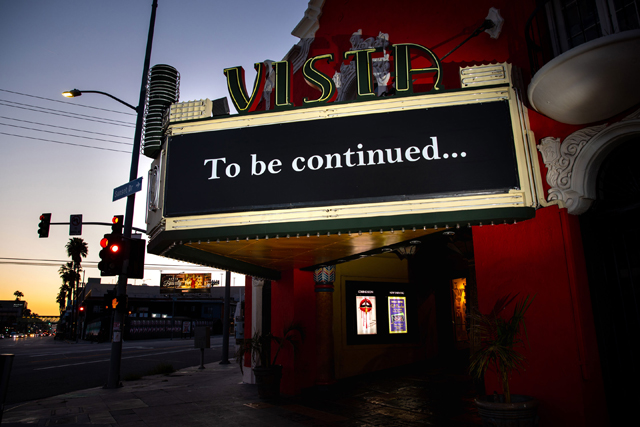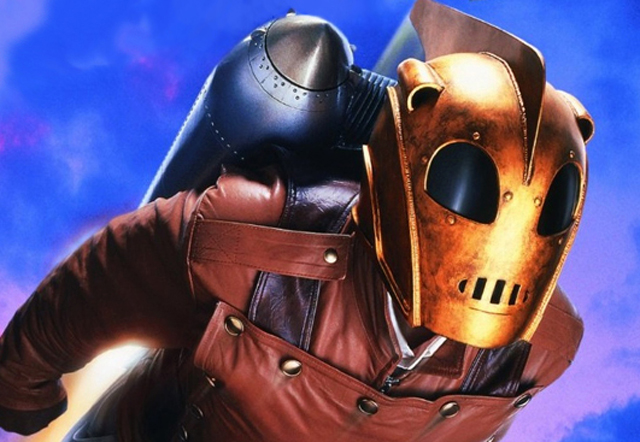
The transition between the 80’s and 90’s in cinema is often not a widely examined period of time. But it does offer some interesting insight into what would happen in the decades that followed. Building off a decade that marked the rise of the blockbuster, the major movie studios began to change dramatically from how it operated in the past. The primary drive of this new phase of Hollywood had less to do with the star power of movie stars and filmmakers and more to do with franchises. It was the decade of Star Wars, Indiana Jones, Robocop, Rocky, and Back to the Future. People were less interested in watching a movie based on who was in it; they now were just interested in something that would show them a good time. The problem for Hollywood though was what constituted a certifiable franchise. Oftentimes a blockbuster might blossom out of nowhere like E.T. The Extra-Terrestrial (1982) and Back to the Future (1985), and the many attempts to chase after those successes ended up falling way short. There was a lot of major attempts at building a bone fide Hollywood blockbuster, but very few actually succeeded. All that Hollywood knew was that movies needed to be bigger and larger than life, but there were so few trends that lasted that actually panned out like people thought they would. That’s why in addition to the mega-blockbusters that made the 80’s noteworthy, there was also a healthy handful of cult favorites that emerged; movies that were perhaps too ambitious or bizarre to be appreciated in their time, but have over the years grown in esteem. It leaves just as much of a handprint on the blockbuster decade as the big blockbusters, and those movies contribute just as much to the identity of Hollywood at that time. For every Star Wars, there was a Blade Runner; for every Ghostbusters, there was a Fletch; and for every The Little Mermaid, there was a Secret of NIMH. And unbeknownst to Hollywood at the time, the movies that often relegated on the trash heap in their time would over the years end up laying the groundwork for the blockbusters of the future.
As the nineties began to go into full swing, a new tool began to redefine the blockbuster once again; computer animation. If the 1990’s had a defining aspect of it’s cinematic impact, it was the proliferation of this new technology; going from the lifelike dinosaurs of Jurassic Park (1993) to the bullet time of The Matrix (1999) in just six short years. But what CGI also enabled Hollywood to do was stabilize the productivity of their franchise output. There was less risk-taking because now people were packing the theaters to just marvel in the technical wizardry of the movies, regardless of the quality of the story (1996’s Twister, for example). But in addition to that, Hollywood power players were also branching out as a new generation was pushing for different kinds of movies being made. That was certainly what was happening to Disney at the time. The new regime under Michael Eisner in the mid-80’s began to shift the entire culture at the legendary studio, moving away from the mentality of “what would Walt do?” to the mindset of “what are we doing right now?” This meant a renewed investment by the company in live action films (as the animation side had been in decline for years) which would help fuel better box office returns to reinvest throughout the rest of the company. Eisner and company knew that Disney needed to tap into a different, adult market, which led to the creation of Touchstone Pictures. A steady stream of successes like the movies Splash (1984) and Three Men and a Baby (1987) helped revitalize the fledgling studio, and even gave them the capital to renew the troubled animation studio that was core to their identity. But what also followed at the end of the decade was a string of more ambitious, envelope pushing movies that not only gave Disney more identity in Hollywood, but would also endear them to a generation of movie-goers who like Disney’s new mix of the gritty and the fantastic. This included the likes of Who Framed Roger Rabbit? (1988), Honey, I Shrunk the Kids (1989), Dick Tracy (1990) and a movie that has especially withstood the test of time, The Rocketeer (1991).
Disney’s The Rocketeer was based on a small but beloved series of comics from the early eighties, which were themselves homages to the Golden Age of DC and Marvel from the 50’s and 60’s. The Rocketeer focuses on a stunt pilot named Cliff Secord who stumbles upon a rocket pack that enables the wearer the ability to fly. Using the pack on himself, he begins to master the aerodynamics of the device, and decides to use the gift as a means of helping others. Over the course of the comics, he does battle with many adversaries, including secret Nazi spies, given that it’s a war time set story. What really made the character distinguishable was his slick, art deco inspired design, with the flight pants, letter jack, and iconic helmet all creating an unforgettable profile. It’s wholesome, idealistic nature also made the character an appealing choice for cinematic interpretation. With the likes of Michael Eisner at the helm, The Rocketeer seemed like a perfect choice to build a new franchise upon that could give Disney their own Indiana Jones style franchise figurehead. Given the task of adapting the comic books to the big screen was director Joe Johnston, a former special effects wizard that rose through the ranks of Industrial Light and Magic, working on films such as Star Wars and Raiders of the Lost Ark before making the switch to directing. Only a couple years prior, Johnston had delivered a surprise hit for Disney with Honey, I Shrunk the Kids, which many praised Johnston for with his command of the movie’s complex visual effects. The hope was that he would likewise give The Rocketeer the same, effective steady hand that could help launch it into franchise territory. And the situation could not be more fortunate for The Rocketeer as well. Only two years prior, Tim Burton broke box office records with his mega-hit adaptation of Batman (1989), proving that there was indeed a viable market for comic book movies. And so, The Rocketeer was positioned by Disney for a mid-Summer release with a lot of expectations. With a proven director, a solid, promising source material, and a studio that was eager to flex it’s wings as a major player, everything seemed perfectly set up for The Rocketeer to big the next big Hollywood franchise.
And then of course, it turned out not to be. In the words of Joe Johnston himself at an anniversary screening years back, “The movie opened on June 21st 1991. There was a lot of sequel talk on June 20th, and almost none on June 22nd. After the first day box office returns came in, it was clear to Disney that The Rocketeer was a non-starter for the company. It opened in 4th place behind Robin Hood: Prince of Thieves, City Slickers, and Dying Young, and tough it managed to recoup it’s modest budget of $35 million, it did not turn a profit thereafter, and quickly faded from theaters. It was disheartening for a studio like Disney which put so much hope that this would be the next big franchise. The truth is, it’s not the movie’s fault that it underperformed at the box office. It was well received by critics, who likened it to past blockbusters like Indiana Jones. And when viewing the movie now, it’s remarkable how perfectly paced and expertly crafted it is. Most people who watch it outside of it’s original release have nothing but good things to say about it. What really was behind the failure of The Rocketeer in 1991 was the fact that it was the wrong kind of comic book movie for that time. Tim Burton’s Batman had dramatically altered audience expectations of the genre, as it spotlighted a much more dark and gritty angle. The Rocketeer’s more earnest and colorful style was in stark contrast with Batman’s brooding nature. And indeed, over the course of the next several years, we would see more comic book movies that followed the Tim Burton formula rather than what was seen in The Rocketeer. But despite it’s initial failure, The Rocketeer did not disappear entirely. Though Disney had largely abandoned it, a small but growing audience held the movie in high esteem and would carry it’s torch even through the multiple fluctuations of the comic book movie genre over the next twenty years, making it a bona fide cult classic. And, to the movie’s benefit over time, some of those cult fans would themselves be in charge of redefining the comic book genre once again.
It just so happened that a couple of the movie’s fans wound up working for Marvel towards the end of the 2000’s. And one of them happened to be head honcho, Kevin Feige, the man behind the creation of Marvel Studios. After nearly 20 years of the comic book genre defining itself with gritty, action oriented adaptations, Marvel wanted to take things in a different direction; moving away from the tendencies of past super hero movies that tried to distance themselves from their pulpy comic book origins. Feige and the Marvel creative trust wanted the genre to return to the earnest, character driven super hero movies of the past, without ever feeling ashamed of the cheesy elements that often gave the comic books so much enjoyable flavor. Iron Man (2008) was the first attempt at this, which was a nice bridge between that idea and still keeping the genre relatively close to what people were familiar with. But, for Feige and screenwriters Christopher Markus and Stephen McFeely, they had a particular movie in mind when they were looking for a style to define the cinematic premiere of one of their most important comic book heroes: Captain America. The imprint of The Rocketeer is unmistakable in Captain America: The First Avenger (2011), with it’s unashamed retro style, and it’s earnest depiction of super heroes origin free from any cynicism. It’s easy to see that when the movie was set in motion that The Rocketeer was the movie they were trying to emulate; so much so that Joe Johnston himself was given the task of directing it. Though the characters are wildly different, the style of the movie is unmistakably in line with Joe Johnston’s work on The Rocketeer. It’s refreshing to see that even after 20 years, Johnston still had the ability to pull this kind of style off and make it work in a whole different franchise. In many respects, Captain America is the spiritual successor to The Rocketeer, and it’s impact would even extend beyond just that one film. Captain America set the tone for the remainder of the Marvel Cinematic Universe just as much as Iron Man by helping Marvel fully embrace the more pulpy side of their stories; in a sense, being unafraid of reminding audience that yes, indeed, this is from a comic book. The combo of Iron Man and Captain America would eventually lay the foundation out for the decade of classics that followed, but the people behind the Marvel empire will tell you that the have movies like The Rocketeer to thank for showing them how it could be done.
So what is it within The Rocketeer that helped modern comic book movies find that right tone and style that has connected with audiences around the world. For one thing, it’s a movie that doesn’t try to deconstruct it’s origins. A large part of the comic book genre in the 90’s and 2000’s was based around grounding the heroes in reality and examining what exactly makes them tick. Sometimes it would work, but other times it just dragged some comic book movies into needless melodrama. The Rocketeer on the other hand is not about all that. It’s less about what is at issue with the main character and more about what he has to do to save the day. The character of Cliff Secord (played by Billy Campbell) is not a flawed, brooding anti-hero; he’s just a good guy wanting to do the right thing. His character flaws are more about his clumsiness rather than anything psychological, and that makes him far more appealing than if he was a scoundrel that got his act together, which was an overused trope in the genre for many years. The stakes are also pretty clearly defined in the film, with Cliff going up against Nazi spies who have their eyes on the jet pack as well. They are led by a spy operating in plain sight as a movie star named Neville Sinclair (based on a real life rumor of Robin Hood leading man Errol Flynn being an allege Nazi sympathizer). I should add that Sinclair is played by actor Timothy Dalton in a deliciously hammy and entertaining villainous turn for the former 007. The movie is also unafraid to lean into it’s corniness from time to time, without trying to apologize to the audience about it later. This is especially the case with a very on the nose patriotic streak found in the movie, with the Rocketeer literally taking to the skies next to a waving American flag at one point; an image that has been countlessly imitated in other super hero films like those of Superman and Spider-Man. It’s colorful supporting cast, including two future Oscar winners (Jennifer Connelly and Alan Arkin), Paul Sorvino, and future Lost castaway Terry O’Quinn playing Howard Hughes, all would themselves continue to set the standard with which future comic book movies would cast their films. Overall, the reason why it continues to inspire the comic book movies of today is because it fulfills the fundamental rule that all movies must follow; it’s just a fun ride from beginning to end.
Is it a movie that directly inspired all modern day comic book movies? Of course not, but it was certainly one that provided the blueprint in which it could work. If it was made today by the likes of Marvel or DC, would The Rocketeer have managed to be a major hit. The conditions of the market certainly would favor it now, but The Rocketeer is a property that doesn’t have the longevity of say a Superman or Batman. The Rocketeer has only been around as a character for the last almost 40 years, itself being a throwback to the comic books of the past. It’s tricky to expect such a franchise to emerge out of those conditions, because despite acting like a story from a different era, it at the same time won’t carry over the legacy of that era. Superman already had a 50 year head start on it. So while a Batman movie can open to enormous success thanks to a built in audience that spans multiple generations, the Rocketeer must hold out hope that enough people are attracted to it’s unique concept in order to compete. Sadly it wasn’t the case in 1991, when it was asked to perform in Batman’s shadow. It was also another in a string of disappointing returns for movies that tried to copy Batman’s formula, including Disney/Touchstone’s own Dick Tracy, which tried way to hard to be just like a Tim Burton Batman movie (down to the Danny Elfman score). What has helped The Rocketeer endure was that it went in a different direction than those others, expelling the broodiness of the Tim Burton’s style and instead embracing the colorful cheesiness of 1940’s pop serials. So, even though it failed to find an audience initially, it managed to attract more people over time thanks to it’s earnest retro style, very similar in a way to another cult hit of the 90’s, The Iron Giant (1999), which by the way had a title character designed by Joe Johnston (seriously this guy’s an underground legend in cinema). It’s a testament to good movies that never fade into obscurity and over time have a more profound impact on the history of cinema than we initially realized.
For me myself, it’s extremely satisfying to see a movie like The Rocketeer grow in esteem over the years. I remember seeing it in the theater upon it’s original release when I was a month shy of 10 years old and loving it immediately. I even went to school that next fall with a Rocketeer lunchbox in my backpack. In my childhood photos, I have even found a picture of me and my brothers getting our picture taken with a Rocketeer walk-around character at Disneyland from that same summer; and by the way, all three of us really loved the movie too. Unfortunately, Disney was in a period of time where box office mattered the most, and they tended to bury their failures for the longest time. That made The Rocketeer extremely hard to find for a while on home video. And even when the movie did get a release, it was minor one; such as a DVD or Blu-ray with no bonus features. Thanks to a streaming service like Disney+, The Rocketeer is readily available to anyone who is curious to watch it, and thanks to the site’s algorithm, it even offers it as a recommendation to anyone who’s been consuming multiple Marvel titles that are also available on the platform. Even still, Disney still can’t quite figure out what to make of the property that they still hold onto. Hopes for a direct sequel are still pretty slim as it’s been 30 years, and the original cast is much older today. There are hopes for reboots in the future, as it’s apparent that Disney is aware of the cult status of the property. Marvel Studios themselves can’t do anything with the character, as The Rocketeer rights belongs to a different publisher, but Disney could maybe pull one of Marvel’s creatives to work independently on a new project, since it’s all under the same roof now. And there certainly have been attempts, like animated cartoons, in the past. However, The Rocketeer’s cult status is still pretty limited to that cult following. It’s not anywhere near MCU level in esteem, but it’s big enough now to where it can’t be ignored either. In any sense, we at least have the original movie itself, which has aged like a fine wine these last 30 years. And perhaps the greatest impact that it left behind was that it changed the expectations of the super hero genre. Over time, it’s fanbase grew and demanded a different kind of comic book movie; one that was unafraid to call itself a comic book movie. And eventually, that fanbase would spawn the people who would end up making comic book movies themselves, thereby delivering on that promise made by The Rocketeer. The Rocketeer in many ways is the grandfather of our current comic book movie dominated culture, and its a satisfying end to see this little movie that could turn into the touchstone that it is for so many other hit movies in it’s wake. Marvel and DC’s current status is carried on The Rocketeer’s broad shoulders, and it is rocketing off sky high.
